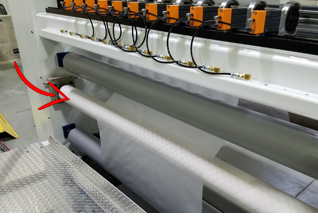

April 5 2019

A converting machine operator has the unenviable task of producing wound rolls of acceptable quality from imperfect web materials. It takes an incredible amount of technology and equipment to produce some of the high-tech structures used in today’s flexible packaging applications, and things don’t always go as planned. Process variability can lead to subtle variations in the properties of the web being produced. Variations in thickness, especially when wound layer-upon-layer in a master roll, can cause permanent distortions in the web that aren’t apparent until the material is unwound into a subsequent converting process. The converting operator now must deal with this imperfect web and produce finished rolls that must meet quality standards acceptable for either the end-user or perhaps the next step in the manufacturing process.
How do you correct imperfect web to meet quality standards?
There are components that exist to make the converting process more tolerant of these material inconsistencies. Whether printing, laminating, slitting, or simply conveying a web through a nipped pull roller, keeping the web flat and wrinkle-free entering those processes is typically a requirement. This can be accomplished with the help of web spreading devices that impart a cross-machine web tension in the material to help smooth it out. These come in various forms of specialized rollers, such as bowed rollers, concave rollers, and slat rollers, as well as bent bars and pinch rollers. Each type has its own set of pluses and minuses and some work better with certain materials than others.
In our next article we’ll cover the various types of web spreading devices and how they’re used.